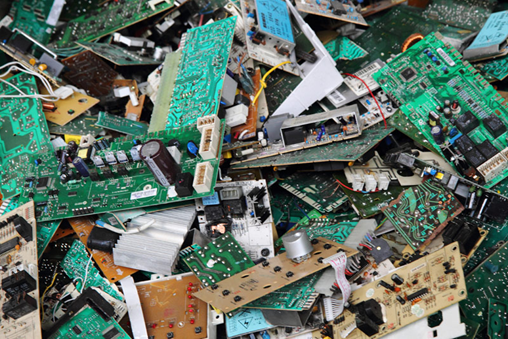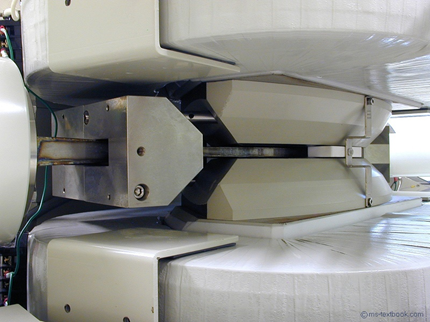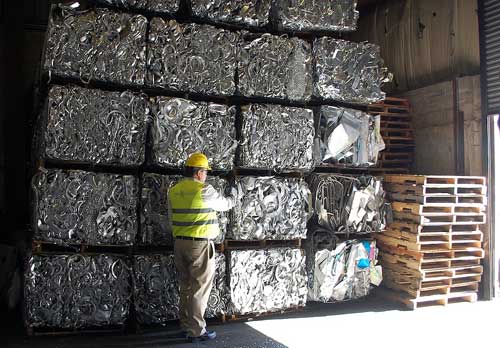This may be upsetting to some of our readers, but the reality is no mass spectrometer can produce data forever (*sobbing into labcoat*). While this can be difficult to accept, rest assured that it’s not over for your geochemically enthusiastic instrument… in fact it’s just the beginning! Here we explore exactly what parts of our mass spectrometers can be recycled, and how this is done!

At Isotopx we like to service and maintain even very senior instruments, and offer upgrade services for certain mass spectrometers, particularly older noble gas mass spectrometers (read more here)
One benefit of doing this is that it keeps an older instrument working long past their expected lifetime, and keeps costs down for the user. This alone has environmental benefits as we’re not bringing a new resource-intensive instrument into the world. We’ve also donated older (but still salvageable) instruments and components to universities! These practices minimize the environmental impact of a new instrument, and gives the mass spec a good home for its final years of producing data Okay, we know mass spectrometers don’t feel emotions – but we like to have fun!
How we extend the life of these instruments got me thinking about the big picture of recycling in our special world of isotope ratio mass spectrometry. I should point out that I’m not suggesting that we can currently recycle customer instruments! For obvious reasons including the environmental impact of the shipping, as along with the additional shipping costs, this process would be economically unviable (at least right now!). But we do recycle our own instruments and instrument components that have come to the end of their lives, and we’re happy to help our users find local companies that can help with recycling, so I think the conversation is relevant.

Firstly, we need to consider the radionuclide issue. Some of our instruments are used to quantify isotopes that you really wouldn’t want to put into the recycling stream, trace actinides for example. This means that instruments used in nuclear facilities are probably too difficult to efficiently recycle. But in the Earth sciences, the amounts of these isotopes are vanishingly small and so with a few exceptions (such as the source region and the detectors) the potential for contamination is very low. So, which can we recycle?
Let’s consider the electronics units. Here in the UK, we have legislation that outlines how waste electrical goods and electronics should be recycled (read about it here). Isotopx, like all of its contemporaries here in the UK, must adhere to this policy. We’ve been doing this routinely for some time now, so recycling electronics is part of our process. When you look in to how electrical goods are recycled, it’s not surprisingly a very difficult and time consuming job but very worthwhile, particularly for the rare earth metals often used in such electronic systems (read more here).

Next let’s look at some of the metal, starting with the magnet assembly. This is made up of a frame, the magnet yoke, pole pieces, and finally the windings. The majority is made up of either pure iron (the pole pieces), steel (the frame and yoke) or copper (the windings). All of this can be, and is, readily recycled. Once or twice over the years we have had magnets that have been damaged during the shipping process. Undamaged parts can be used in another magnet assembly relatively easily, while any damaged parts are readily recycled. This means that no magnet part ever goes to landfill – woohoo!
The bulk of the ion beam flight path (flight tube and housings) consists of stainless steel, so let’s consider that next. Fortunately, stainless steel is readily recycled and has been so for many years. In fact, it’s probably easier to recycle than many “ordinary” materials. The British Stainless Steel Association states that any stainless steel item is likely to contain around 60% recycled material, which is better than most household plastic items (link here). We do of course recycle any waste stainless steel from scrapped instruments (subject to confirmation that there is no contamination), and fortunately there is a thriving steel recycling community here in the UK so it’s probably one our easiest ways to be kinder to the environment.

The story is similar for non-stainless steel (mild steel, which contains significantly less chromium than stainless steel), which is used extensively in the instrument frame and panels. In fact, this is such a commonly-recycled material that we have several companies able to recycle our unwanted mild steel within a few miles of our factory (keeping the carbon footprint of the recycling procedure low).
Next a challenging one… the vacuum pumps. The issue here will be contamination. Many such pumps are “dry” in our industry, meaning they do not require lubricating oil, but any pump containing oil that has potentially become contaminated will require specialist recycling. We recycle our vacuum pumps directly via the initial supplier, who informed us that they can reuse quite a few of the components and clean mildly contaminated parts to allow for recycling. So overall, not much goes to waste.
What’s left? Actually, not much! There are small amounts of plastics and ceramics that are contained in a typical instrument. The former is readily recycled, the latter less readily but it is still possible. Ultimately, you’ll be pleased to hear that almost nothing from an old isotope ratio mass spectrometer (contamination not withstanding) goes to waste. Who knows, maybe parts of your next car were parts of a mass spec in their former life, it’s not impossible!
If you’ve got any thoughts, questions or comments about the recycling of mass spectrometers, or ideas on how to make this process more green – please let me know, I’d be keen to hear (Stephen.guilfoyle@isotopx.com).
